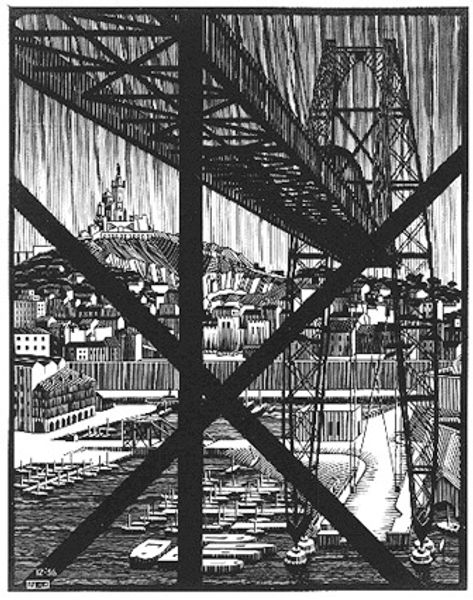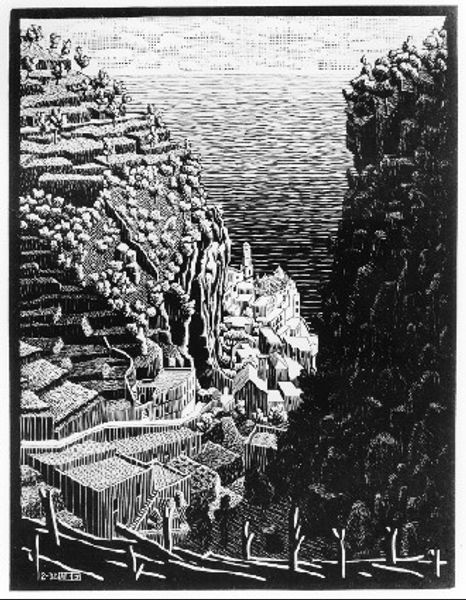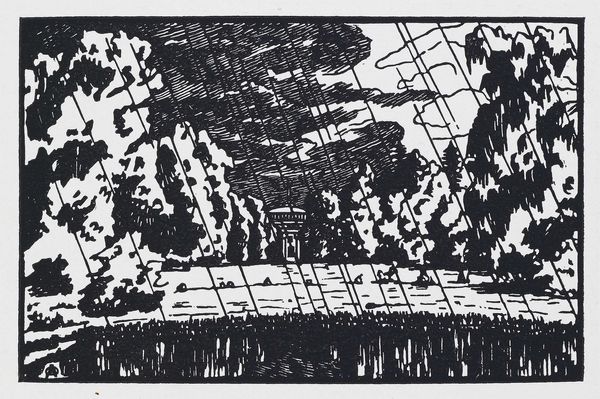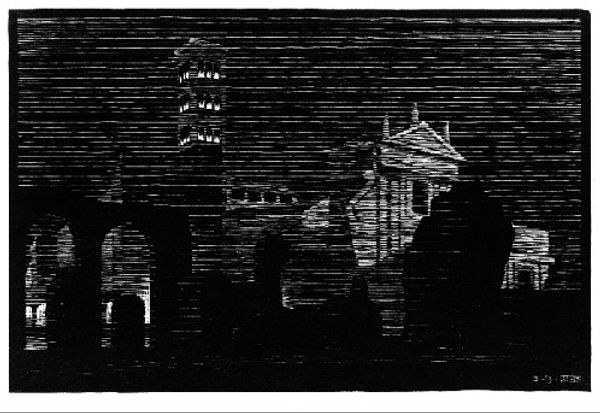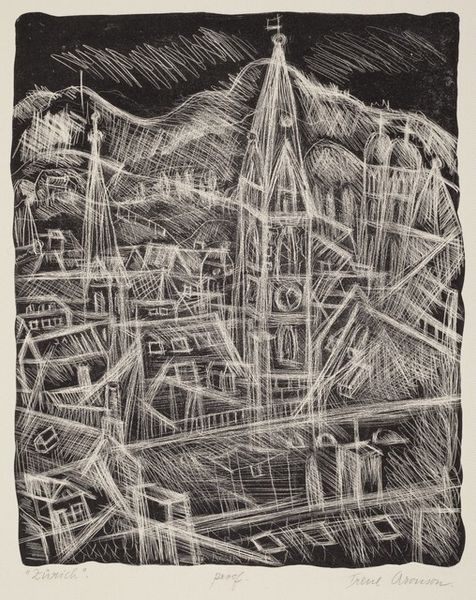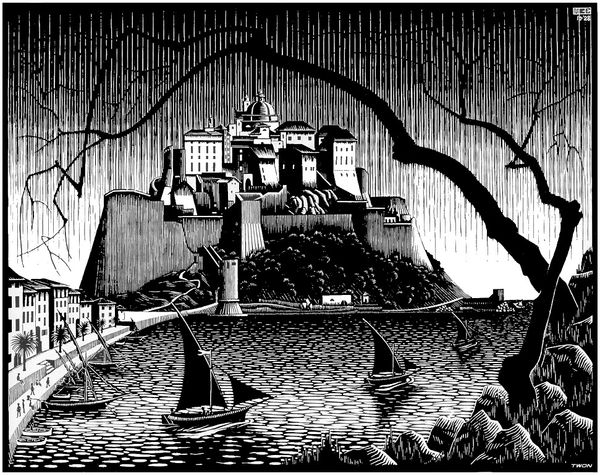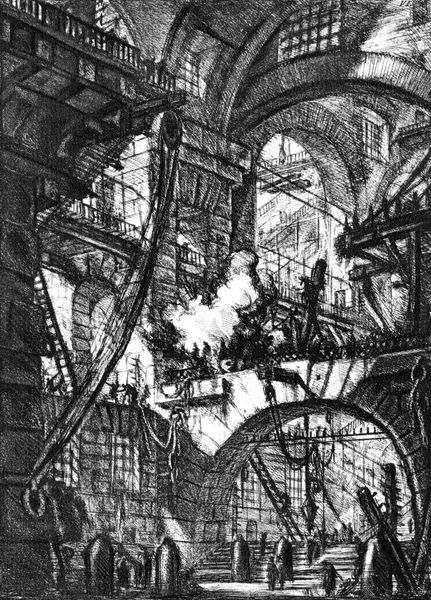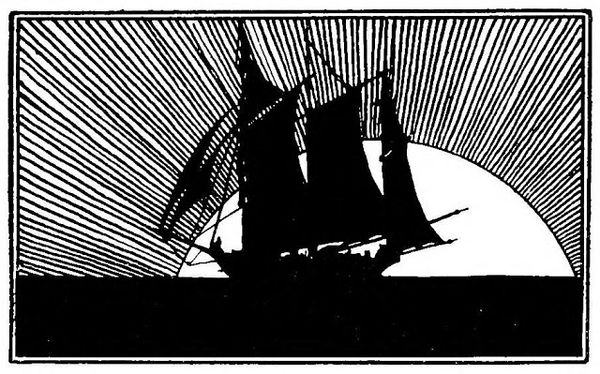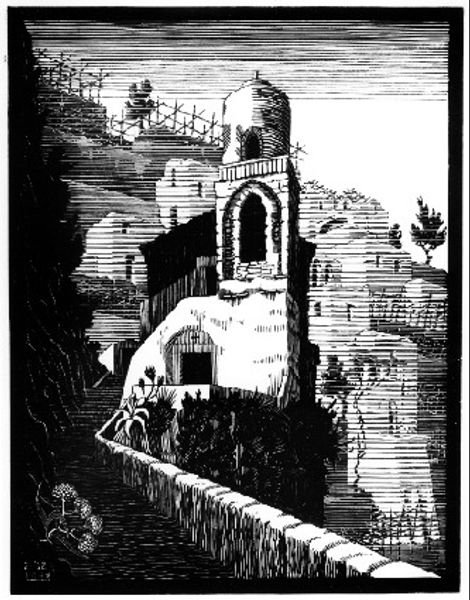
print, woodcut
# print
#
landscape
#
geometric
#
woodcut
#
cityscape
#
modernism
Copyright: M.C. Escher,Fair Use
M.C. Escher made this woodcut, Catania, Sicily, in November of 1936, with the simplest of means - stark contrasts of black and white creating something that feels both highly structured and full of movement. Look at the way the artist's hand translates the world into thin lines, and then thicker blocks, as if reality can be broken down into these graphic marks. The reflections on the water are like a dance of lines, each one carefully placed to suggest depth and movement. The sails, those long, elegant lines reaching towards the sky, create a rhythm that pulls your eye upwards, while the dark mass of the buildings anchors the composition. Escher’s later works played with perspective, and he became synonymous with optical illusions. But it’s great to see him work in this simpler, more direct way. It is reminiscent of other graphic artists such as Aubrey Beardsley. Like Beardsley, Escher here explores the tension between clarity and ambiguity, inviting us to question what we see.
Comments
No comments
Be the first to comment and join the conversation on the ultimate creative platform.
